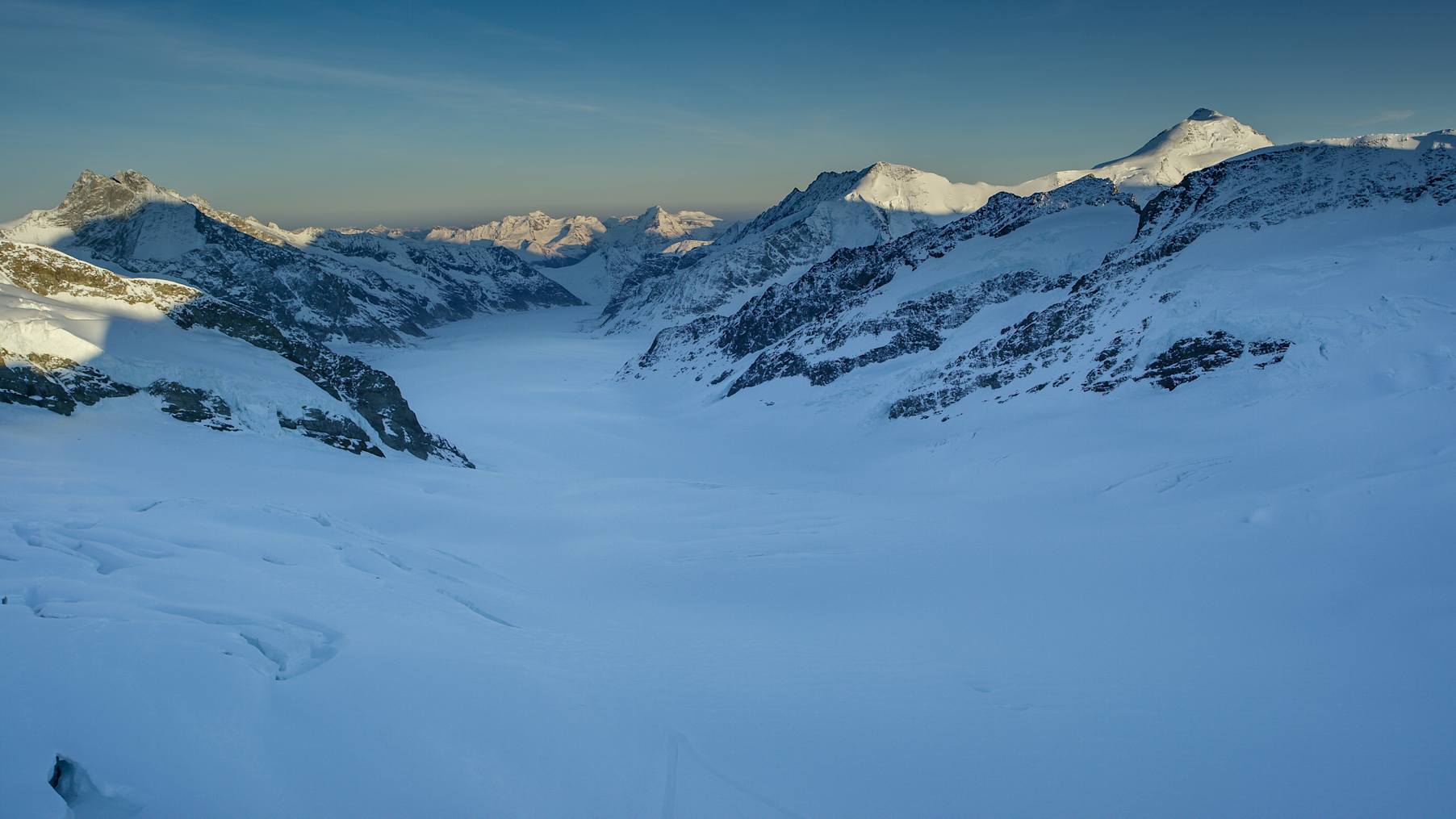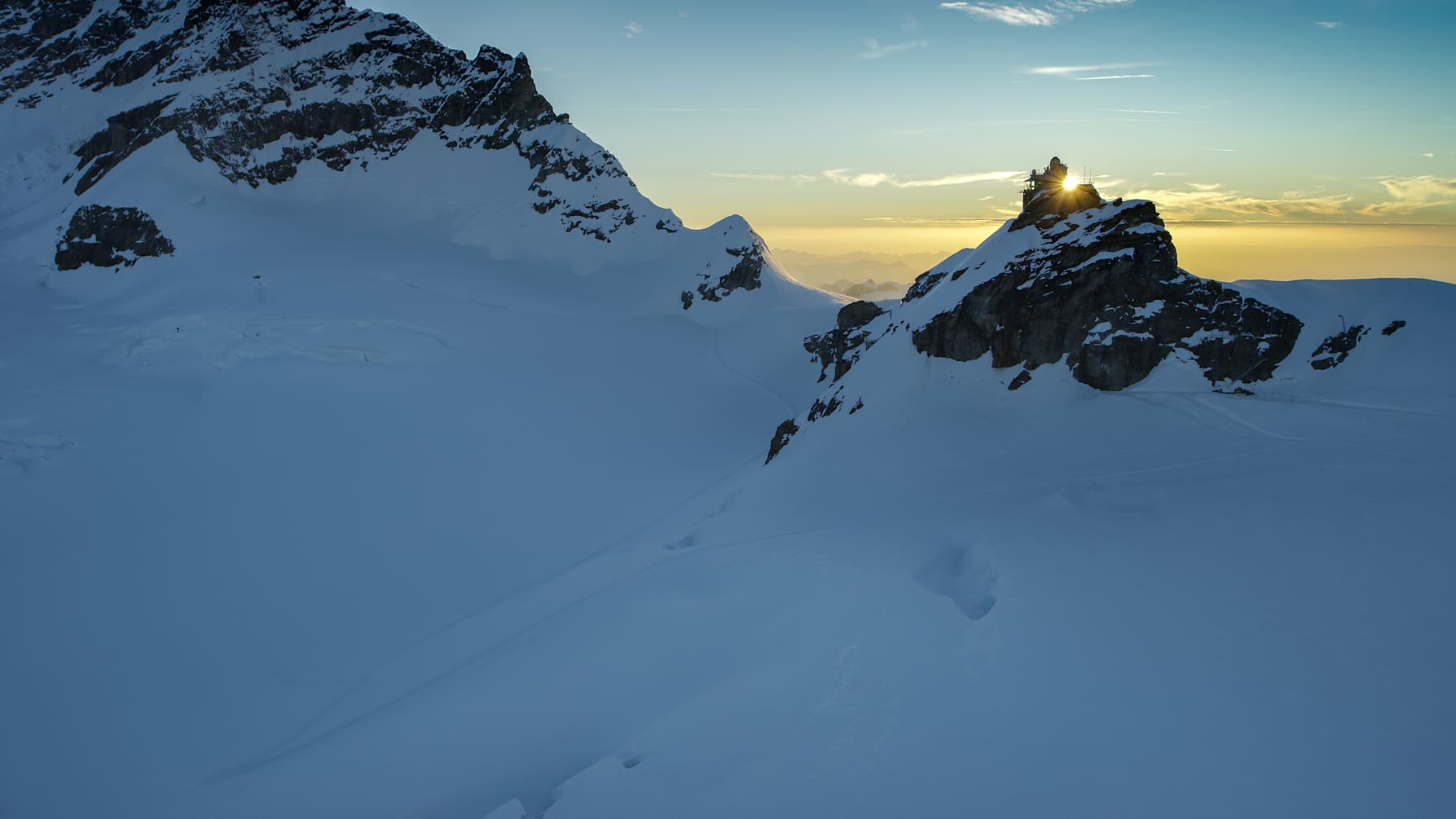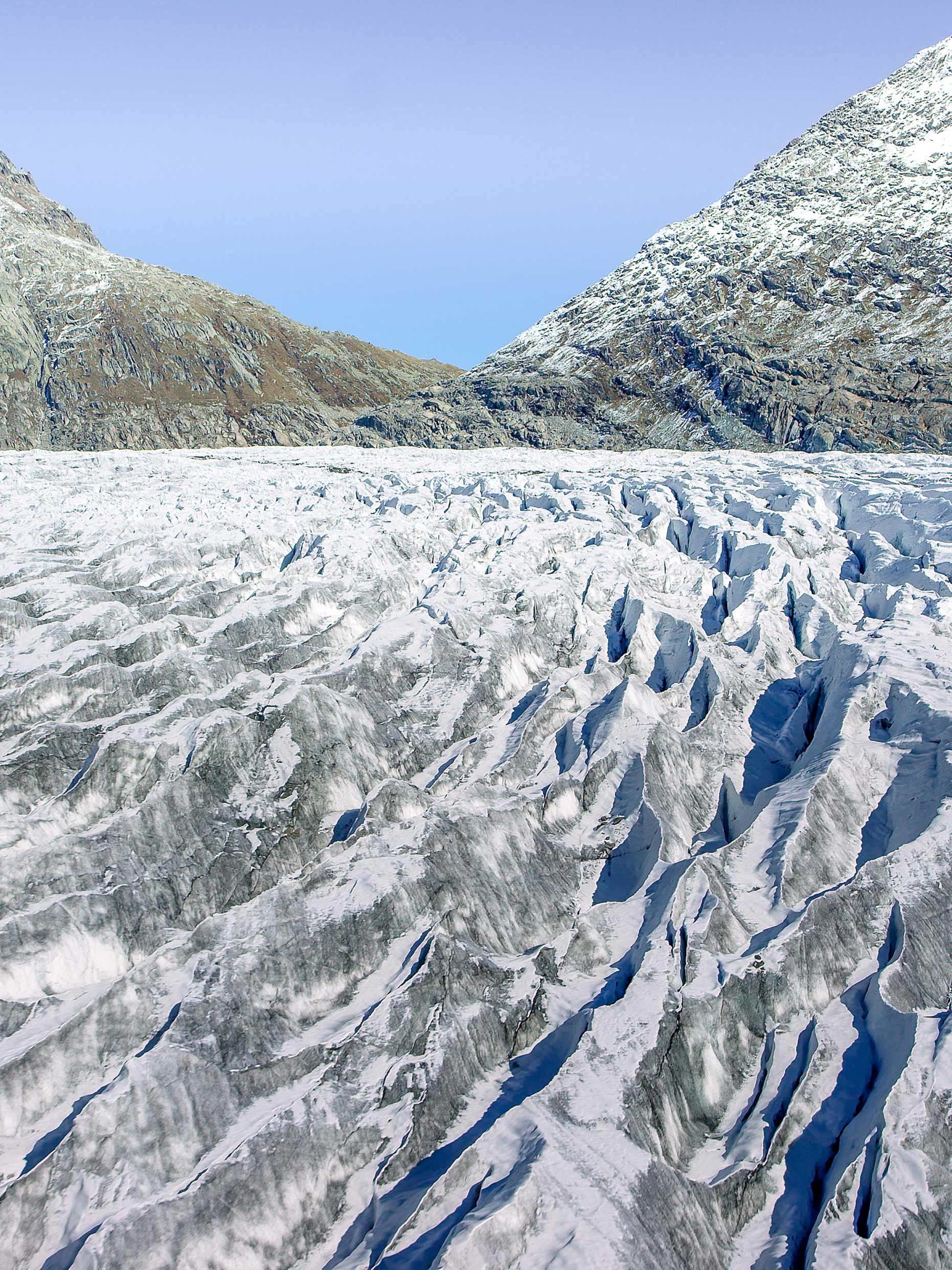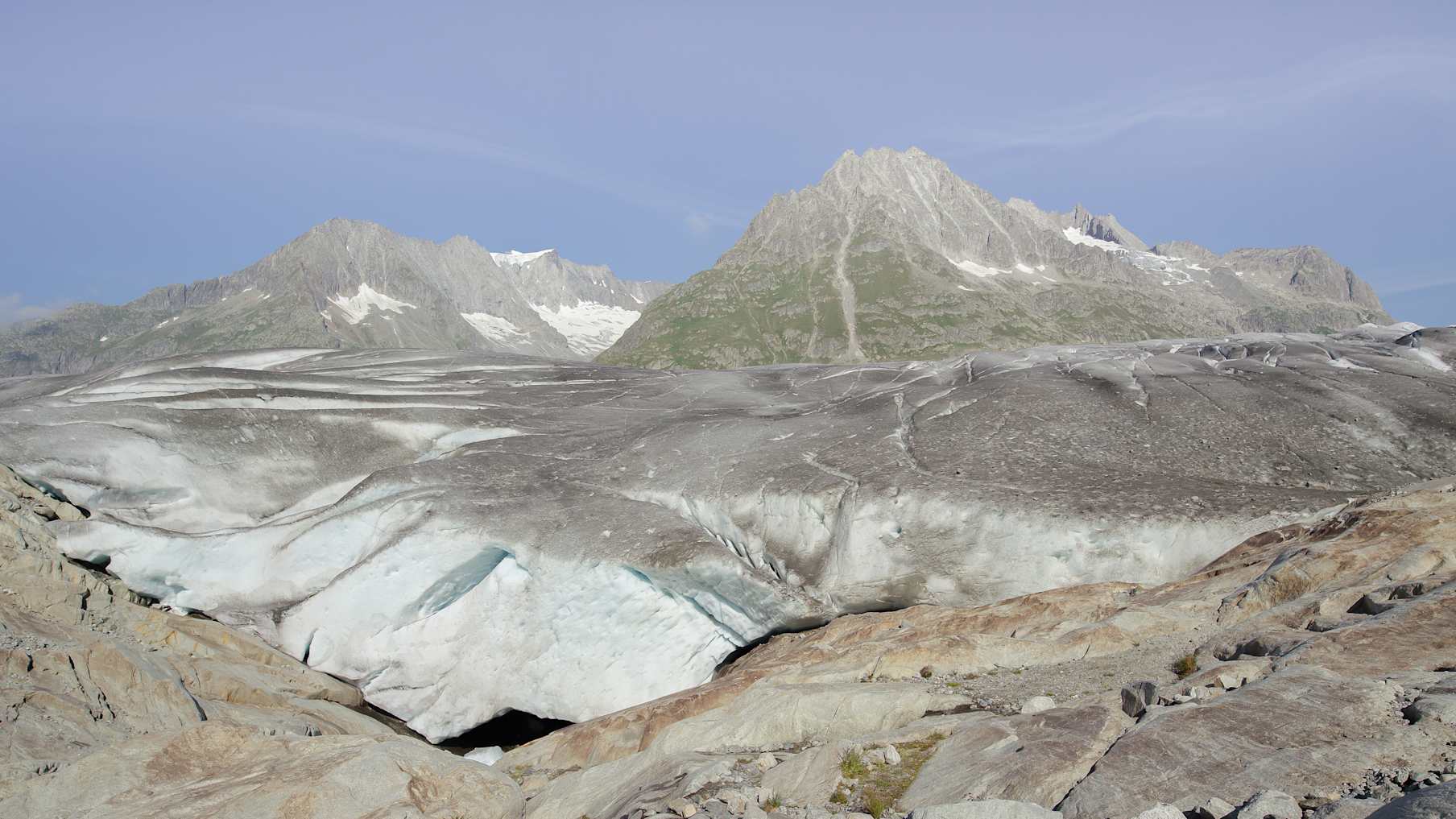-
-
-
-
( )
-

The gigantic ice current has held researchers, visitors and locals under its spell for centuries.
There were times when people were afraid of glaciers. The Great Aletsch Glacier advanced year after year, as did the neighbouring Fiescher Glacier. In so doing, they buried forests, paths and the cultivated land. In order to prevent this, since the mid-17th century, the valley dwellers carried out processions, prayed and set up "spell crosses" that can still be seen today. They didn't have much success. The glaciers continued to grow.

Ironically, when the Great Aletsch Glacier was the longest, the tide turned. In the middle of the 19th century, the hazard became a research object. The glaciologist Arnold Escher from the great Escher dynasty began taking measurements in 1841. The length of the Aletsch Glacier has been systematically recorded since 1892.


The Aletsch glacier is today one of the most thoroughly researched and visited glaciers in the world. Its size and beauty attract thousands of people each year. Travel to the Jungfraujoch on Jungfrau Railways. There is a stunning view of the fir trees that feed on the Aletsch glacier, the ice stream and the four-thousand metre peaks in the background.


You have to stand upon it to get an idea of how huge the ice mass is. It's not for nothing that this icy wonder is the heart of the Jungfrau-Aletsch protected area, a UNESCO World Heritage Site. Approximately 22 kilometres of ice and an area of around 80 square kilometres stretch out in front of you. The largest glacier in the Alps is nearly 900 metres thick at its lowest point at Konkordiaplatz. And it's twice as wide. In total, there are around ten billion tons of ice here.

Because of its enormous mass, the Great Aletsch Glacier melts slower than smaller glaciers. But it is also losing weight, and has been doing so for around 150 years. In the last 30 years alone, it has lost 2.2 cubic kilometres of water. That's about as much drinking water as Switzerland consumes in two years.

Research has also benefited from its retreat. Where the Great Aletsch Glacier has retreated, it has repeatedly revealed witnesses to its history: trees, for example. Some of these date back to the Bronze Age (circa 1300 B.C.). Together with historical documents and measurement data, scientists have been able to understand when the glacier grew and receded over the past 3,500 years. This data gives us clues about the climate of the past. And they help us to put today's global warming in perspective.
At 22 kilometres, it is the heart of the Jungfrau-Aletsch protected area, a UNESCO World Heritage Site. It covers an area of 80 square kilometres and is 900 metres thick at its deepest point.
For the locals, however, it's not enough to record measurements. They have taken action. In the annual procession, which continues to this day, they have been praying for some years for the glaciers in the Jungfrau-Aletsch protected area to grow again.
